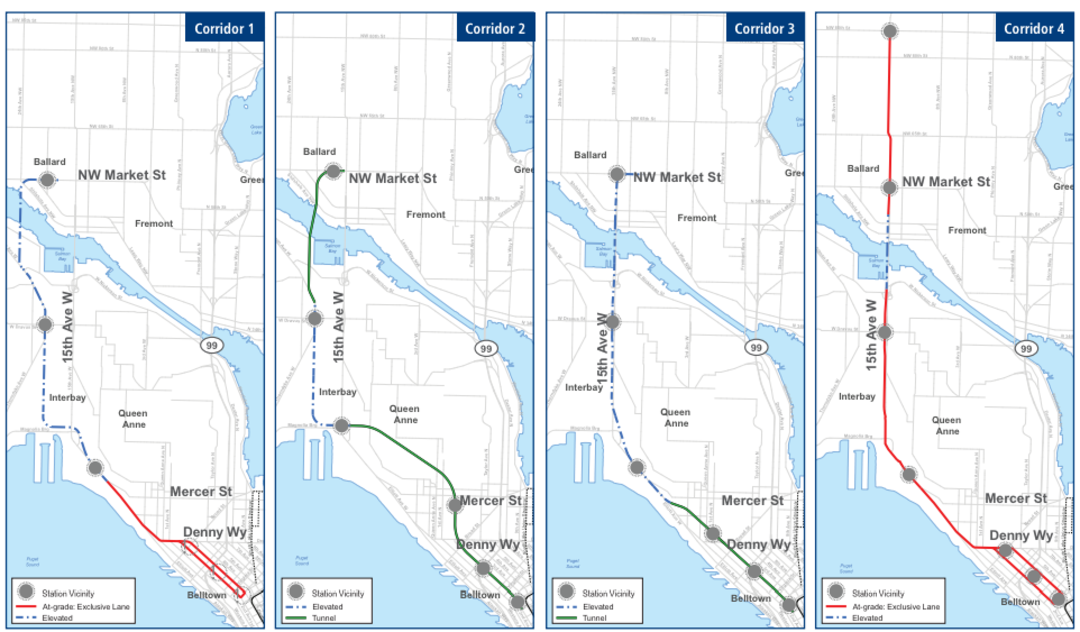One Question for Peter Steinbrueck

IIWT
During the Q&A portion of last night's finale to our Mayoral Movies series at Northwest Film Forum, former city council member Peter Steinbrueck mentioned his belief that Sound Transit has a policy that gives preference to light rail over other technologies, like bus-rapid transit, that might be cheaper, on the theory that only fixed rail truly promotes economic development. (He said he heard this repeatedly at a recent Sound Transit-SDOT-sponsored open house in Ballard on possible transit improvements between downtown and Ballard.)
Mayor Mike McGinn, of course, has enthusiastically endorsed a new light-rail bridge to Ballard, which Steinbrueck said was unrealistic at a time when "we have a $2 billion backlog in major transportation needs. I know it's not as exciting [as light rail], but when bridges are falling down, you need to fix them."

We asked Steinbrueck to elaborate on why non-light rail transit might make more sense in some areas, what he thinks of the existing "bus rapid transit" lines to Ballard and West Seattle (AKA RapidRide) and why he thinks Sound Transit (and SDOT) are going about transit planning the wrong way. Here's what he had to say.
Simply put, their theory is that fixed rail supports economic development, whereas rubber tire [technology, AKA buses] does not. ... I guess my point last night was that I just want to see the most practical, cost-effective solutions for mobility. I think the economic development side of it is going to happen anyway in our city because there's so much [growth] pressure, and I think if we create transit corridors development will happen along them, whether it's light rail, BRT, or trolley lines.
I’m not wedded to one mode or another. I think there’s too much dogma around that. How many decades do we wait, how many bond measures have to fail, and how much worse does the traffic have to become?
[BRT] may not be a light rail station, which is the more concentrated, concentric development, but BRT is such a new concept to Seattle and the area that it has hardly been given a chance. We do not have a working model for BRT in Seattle. We have a fancy, souped-up bus that is painted red and has some little mini-stations. The real technology has not been implemented for BRT. I want to see a side-by-side comparison—cost, implementation, time. I just see things getting a whole lot worse while we wait and wait and study and pursue these expensive options.
I do think light rail's very appropriate for regional corridors, and we sould move quickly on that. And I think it’s more supportable financially, because of the cost sharing involved, whereas local light rail is not. I’m not accepting the claim that only light rail can produce economic development.
Sound Transit spokesman Geoff Patrick says the agency doesn't have a policy giving light rail preferential treatment, although the Ballard corridor has been identified as a potential route for rail.
"When it comes to other corridors for future expansion, BRT will be very much on the table in different corridors; however, in this particular corridor, based on what’s in our long-range plan right now and (RapidRide), the focal point of the current study is rail."




